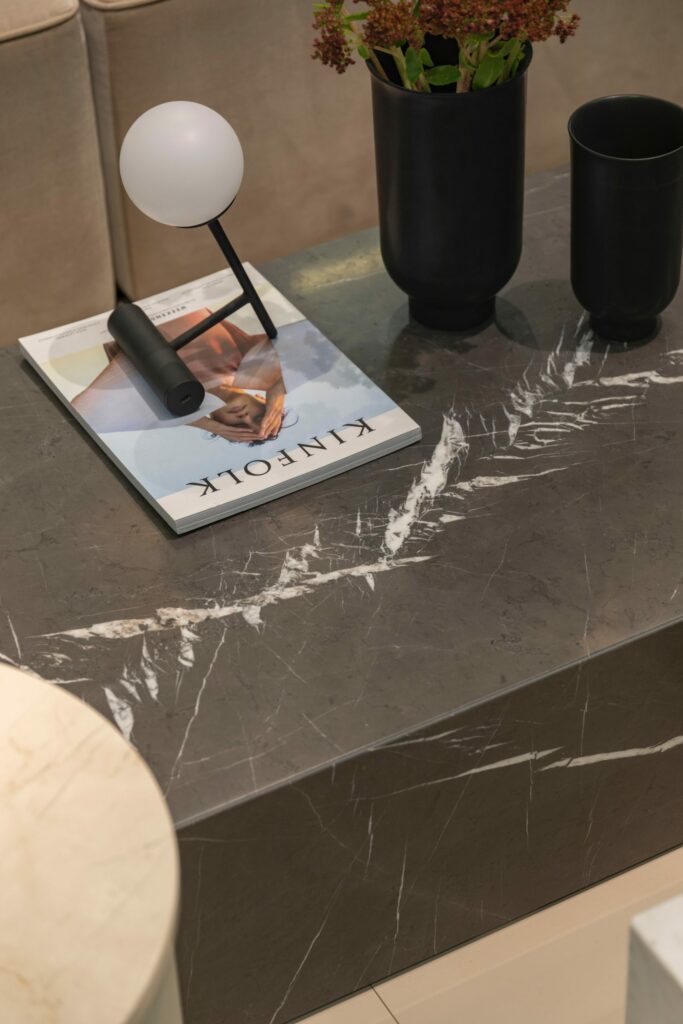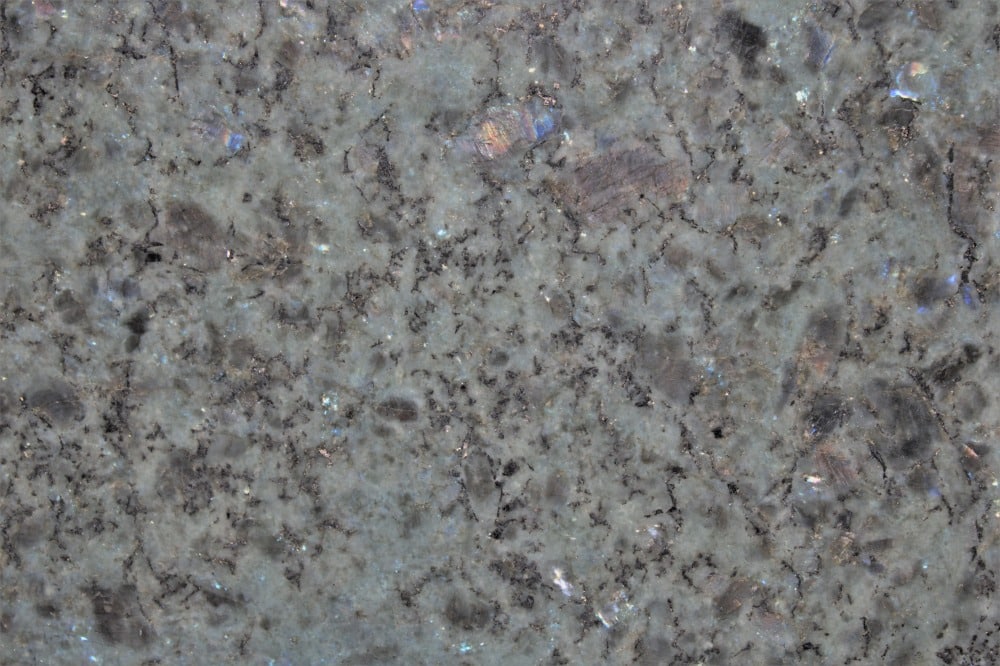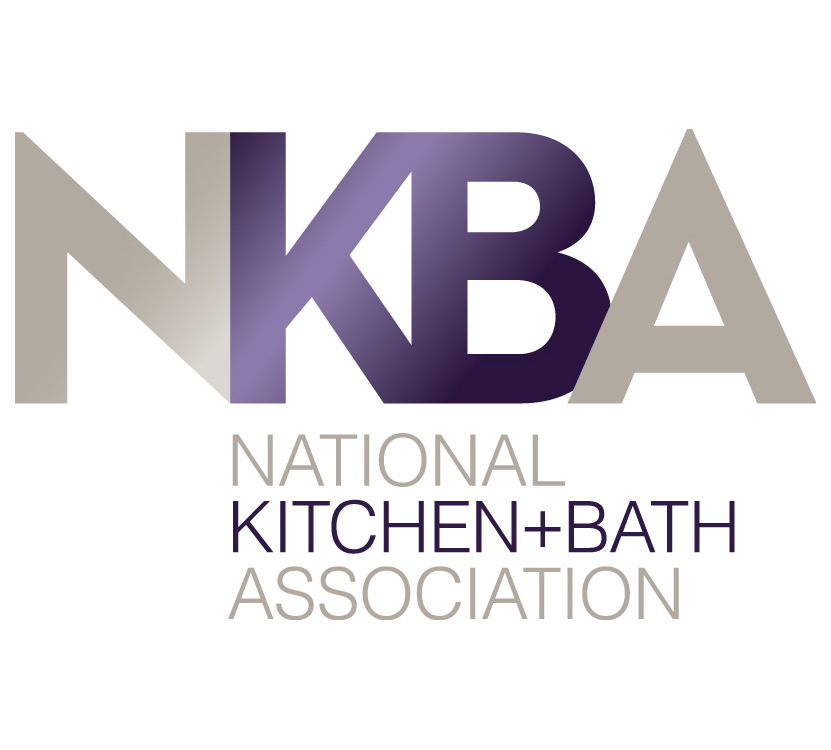
Marble and quartzite fill a big, beautiful niche in the world of natural stone. They both offer serene, natural hues of white, cream, and grey. Both have a pleasing sense of movement and pattern, ranging from mild-mannered to vivid. But despite their similar aesthetics, the stones have entirely different properties. Understanding marble vs. quartzite is the first step to deciding how to use them.
Marble is soft; quartzite is hard.
Hardness is a stone’s resistance to being scratched. Every mineral has a specific hardness, and taken together, the hardness of the minerals in a stone dictate its overall hardness. It’s easy to get a sense for a stone’s hardness by trying to scratch it with a common material like a copper penny or steel knife blade.
Marble is made of calcite, which has a hardness of 3 on Mohs hardness scale. In everyday terms, that means you can’t scratch it with your fingernail, but you probably can scratch it with a copper penny.
Care to guess which mineral quartzite is made of? Quartz, naturally! (Not to be confused with manufactured quartz surfaces, which contain ground-up quartz minerals plus resins and colorants.) Quartz is among the harder minerals, with a Mohs hardness of 7, and quartzite is harder than glass, a steel knife blade, or a steel nail.
It’s possible – though not common – for a stone made of hard minerals to scratch easily. This can happen when the grains of the stone pull apart from each other. For example, sandstone is made of quartz, but if the sand grains are not stuck together very solidly, the stone can crumble even though it’s made of a hard mineral. In future articles I’ll delve deeper into some of the details of quartzite and sandstone and what to look for in these stones.
Pass the salad dressing… carefully.
Acidic liquids trigger a chemical reaction on marble, causing tiny amounts of calcite to be dissolved. This is called etching, and it usually looks like a dull area on a polished slab. Etching has no structural effect on the stone – it’s purely an aesthetic change. Etches can be buffed out of marble, but the best way to deal with etches is to accept them as a fact of life, and even embrace them as part of the living surface of a natural material.
Quartz is a naturally inert mineral and it does not react with everyday acids like vinegar or lemon juice. So quartzite won’t be bothered by a less-than-tidy cook, a boisterous dinner party, or an errant splash from the pickle jar. Note that strong acids like oven cleaner or toilet bowl cleaner should be kept away from any type of natural stone or manufactured quartz.
Both stones can stain – or not!
Here’s where things get a little confusing, so bear with me. A stone’s ability to withstand stains is determined by its porosity. If there are tiny spaces in between the mineral grains, then blue Gatorade will be able to get inside the stone and stay there. But the fewer the pore spaces, the less staining will happen.
Some marbles are porous, and some aren’t. The same is true for quartzite. This is because both are metamorphic rocks that went through a few million years of heat and pressure down deep in the Earth’s crust. But exactly how much heat, and how much pressure did the stone endure? Well it depends, of course, because geology is fickle. Some marbles and quartzites were only lightly metamorphosed, meaning not all the pore spaces were squeezed shut. But others were squished so thoroughly that the stone became low porosity and hence, stain resistant.
How can you tell if a given stone is likely to stain? The answer is easy: Try to stain it and see what happens. I recommend food coloring, chili oil, or brightly colored fruits. An important caveat – experiment on a scrap piece of stone and not on your actual countertop, nor on a slab in a showroom. Ideally you can get a small piece of stone to try out some tests.
Sealing a stone is one way to reduce its porosity, and for this reason many types of stones are sealed. The more porous a stone, the more carefully and frequently it will need re-sealing.
Marble Vs. Quartzite: Which one should you choose?
This is an impossible question for me to answer. The decision of marble vs. quartzite depends on your personality and how you plan to use the stone. In a busy kitchen or other high-traffic area, quartzite is likely to stand up better over time. But for a buffet top, vanity, or fireplace mantel, marble’s classic good looks will shine through year after year.
If you’re one of those enviable people that tend to roll with life’s punches and shrug off imperfections, then marble can be a worthwhile choice. But if the mere thought of a scratch or an etch makes your blood pressure rise, then you’re probably a better candidate for quartzite.
So take stock of your needs, reflect on your own character, and align those factors with a stone that’s inherently compatible with how it will be used. When it comes to marble vs. quartzite, the “best” stone is always the one that’s thoughtfully matched to its intended purpose.
Color of the Month: Ultramarine Green
This month’s featured trending color is Pantone 18-5338, Ultramarine Green! The Pantone Color Trend Report says, “Ultramarine Green, a deep cooling blue-green, exudes self-assurance and poise.”

Similar to the wings of a butterfly, Labradorite Madagascar is renowned for its unique iridescence. In the light, its glassy blue accents gleam and transform into a rainbow of colors, while the background of soothing green remains an eternal constant. Effortlessly illuminate your kitchen by choosing this splendid granite for the countertop.












